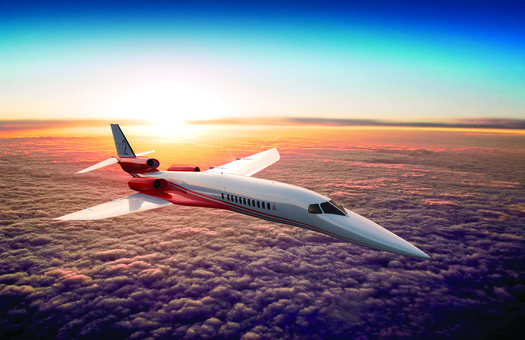Estimated reading time 4 minutes, 24 seconds.
Aerion’s supersonic AS2 is being developed in collaboration with Airbus, with entry into service planned for 2022. Aerion Image
In its heyday, the world’s first supersonic transport, the Anglo-French Concorde, catered to an eclectic mix of entertainers, royalty and captains of industry.
Bragging rights accrued to those who could afford tickets; but until it was retired in 2003, Concorde proved a useful tool for executives who needed to close deals in faraway places or simply avoid the congestion that conventional commercial jets offered.
Texas-born billionaire Robert Bass has dreamed of resurrecting that ability ever since the Concorde was grounded. There are indications that his company, Aerion Corporation—founded in 2002 and based in Reno, Nev.—is close to making the dream a reality, with its proposed AS2 supersonic business jet.
Jeff Miller, director of marketing and communications for Aerion, suggested to Skies that the “next most likely update” could be at the May 19 to 21 European Business Aviation Convention and Exposition (EBACE) in Geneva, Switzerland. It’s a prime opportunity for Aerion to update potential buyers, with an expected crowd of 13,000 business aviation professionals and corporate and government leaders.
Even with a price tag topping US$100 million, there is no denying the appeal of an aircraft capable of carrying up to a dozen passengers more than 4,000 nautical miles non-stop, at up to Mach 1.6, in a level of comfort far better than Concorde ever did. Maximum takeoff weight for the AS2 would be 115,000 pounds.
It has been a long haul for Aerion, as other manufacturers have found with “clean sheet” designs, but the payoff could be worth it. Some 50 letters of intent for the triple-engine jet have been signed, a potential order book which will almost certainly expand as the AS2 matures.
The focus now is on a first flight in the third quarter of 2019, U.S. certification two years later after an extensive flight test program, and then entry into service in the second quarter of 2022.
Having unveiled the AS2 concept at the 2004 National Business Aviation Association (NBAA) show, Aerion replaced the original T-tail with a low-mounted cruciform shape and refined the fuselage and wing. “We are on track for making supersonic travel a reality,” Bass said at the time, envisaging a market of at least 250 aircraft in the first decade of production.
The company has invested heavily in its key enabling technology, supersonic natural laminar flow (NLF), demonstrating it in supersonic flight tests of a calibration fixture mounted on a Boeing F-15B Eagle owned by the National Aeronautics and Space Administration.
The AS2’s wing is unswept, tapered with a sharp leading edge and has slightly curved lower as well as upper surfaces. Aerion says it reduces drag by about 50 per cent compared to conventional swept or delta wings, and cuts overall airframe drag by up to 20 per cent, making supersonic flight practical for regional and intercontinental travel.
The program received a major boost last fall: a deal with Airbus to exchange knowledge and capabilities in design, manufacturing and certification. Their engineers are already collaborating in Reno and Aerion chief executive officer Doug Nichols said the agreement “kicks the program into high gear” with “validation from the industry leader in aerospace innovation.”
Editor’s Note: On May 18, 2015, Aerion Corporation announced at EBACE that it had opened the order book for the AS2 supersonic business jet, with the price set at $120 million in 2015 dollars.

